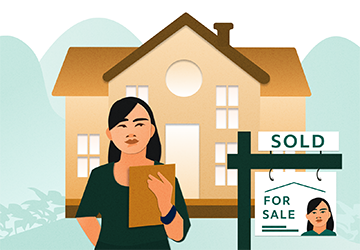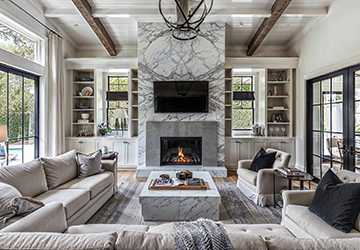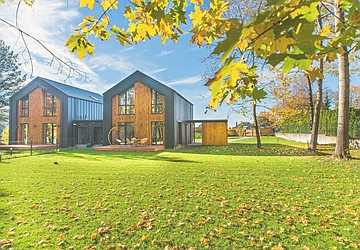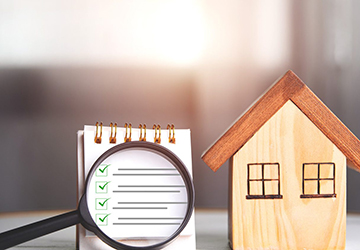
10 Best Green Home Features That Save Money
atika
In an age of increasing environmental awareness and rising operating costs, eco-friendly home features are more than just a trend; they're necessary. These sustainable solutions not only reduce our carbon footprint but also have the potential to save homeowners significant amounts of money in the long run. From energy-saving appliances to smart home technology, numerous eco-friendly features can make your home green and economical. This article explores 10 of the greenest home features that are good for the planet and save big on your utility bills.
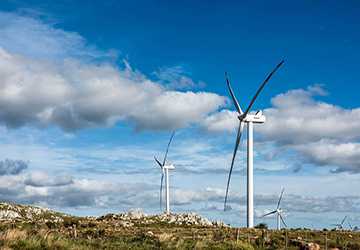
Eco-friendly home features that save money
In today's world, the pursuit of sustainability and cost efficiency go hand in hand. As homeowners become increasingly aware of their impact on the environment and the rising daily living costs, demand for eco-friendly home features has surged. This article looks at 10 of the greenest home features that are economical and environmentally friendly.
Solar components
Solar panels have become one of the most prominent eco-friendly home features, and for good reason. Solar panels offer homeowners the opportunity to significantly reduce their reliance on traditional energy sources by harnessing the sun's power to generate electricity. While the initial installation costs may be high, the long-term benefits are undeniable. Solar panels have the potential to reduce your electricity costs significantly. Sometimes, you can sell excess energy back to the grid and generate revenue. Technological advances have made solar panels more affordable and efficient.
Energy-saving equipment
Replacing outdated, energy-hungry equipment with modern, energy-efficient alternatives is a wise financial and environmental investment. Energy-efficient appliances such as Energy Star-certified refrigerators, washing machines, and dishwashers can significantly reduce electricity usage and lower monthly utility bills. These devices often have advanced features like adjustable settings and intelligent technology that allow you to customize and optimize their performance, resulting in more significant energy savings.
LED lighting
Replacing traditional incandescent light bulbs with LED lighting is a simple and effective way to reduce your home's energy consumption. Not only are LED bulbs more energy efficient, but they also last longer, which means fewer replacements and less waste. Although LED bulbs cost more, they use up to 80% less energy and last up to 25 times longer than incandescent bulbs, ultimately saving you money on utility bills and replacement costs.
High performance insulation
Proper insulation is essential to maintaining comfortable indoor temperatures and reducing heating and cooling costs. Heavy-duty insulation like spray foam or fiberglass can significantly improve a home's energy efficiency. By preventing heat from escaping in the winter and keeping cool air in during the summer, you reduce the need to constantly adjust your thermostat, saving you significant money over time.
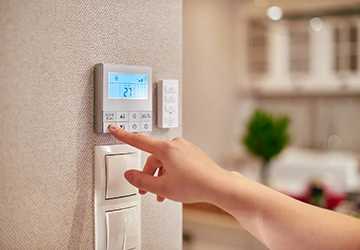
Programmable Thermostat
A programmable thermostat is a small but mighty addition to your home that can provide significant energy savings. These smart devices allow you to schedule and adjust the temperature according to your daily routine. For example, you can set your thermostat to lower the temperature when you work or sleep and to raise the temperature at home. This level of control helps reduce energy consumption, keeping your home comfortable while saving money on heating and cooling costs.
Low flow plumbing fixtures
Another critical aspect of green housing is water conservation. Installing low flow plumbing fixtures like toilets, shower heads, and faucets can help conserve water without sacrificing performance. These faucets are designed to maintain water pressure while using less water, resulting in lower water bills and less environmental impact. The savings add up over time, making low-flow faucets a practical choice for any environmentally conscious homeowner.
Rainwater collection system
Rainwater harvesting systems are an innovative way to save money and reduce water consumption. By collecting rainwater from your roof and storing it in a tank, you can use it for tasks such as watering your garden, washing your car, or flushing your toilet. This reduces your reliance on municipal water sources and lowers your water bill. Additionally, rainwater is naturally soft and chemical-free, making it an environmentally friendly irrigation option.
Energy-saving doors and windows
Doors and windows are often overlooked regarding energy efficiency, but they are vital to maintaining warmth in your home. Energy-efficient windows and doors are designed to minimize heat transfer, keeping your home warmer in the winter and cooler in the summer. This reduces the heating and cooling system load and energy costs. Look for windows and doors with high-quality insulation and multiple layers of glass to maximize their effectiveness.
Smart home technology
Integrating smart home technology can significantly improve a home's environmental friendliness and energy efficiency. Smart thermostats, lighting systems and appliances can be remotely controlled and programmed for optimal operation, so energy is not wasted when it is not needed. Additionally, the ability to monitor and adjust home energy use via a smartphone app can lead to more informed decisions and further cost savings.
Sustainable building materials
When building or renovating your home, consider using sustainable building materials. Materials like bamboo flooring, reclaimed wood, reclaimed glass countertops and low-VOC paints can help create healthier indoor environments and reduce the environmental impact of a construction or renovation project. These materials may have a higher upfront cost but can lead to long-term savings through increased durability and reduced maintenance.
Conclusion:
Incorporating eco-friendly home elements into your living space benefits the environment and provides significant financial benefits. From solar panels and energy-efficient appliances to LED lighting and smart home technology, there are options to reduce your environmental impact and save money. Features like heavy-duty insulation, low-flow plumbing fixtures, rainwater collection systems, and energy-efficient windows and doors can significantly reduce utility bills. As we face the challenges of climate change and rising energy costs, turning to an eco-friendly home is a proactive and responsible decision.
